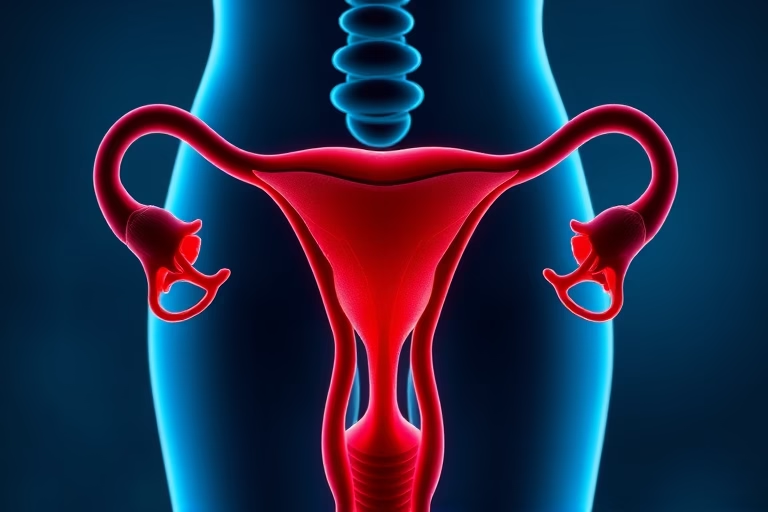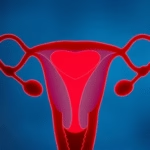Understanding Implantation Bleeding with Endometriosis
The topic of implantation bleeding with endometriosis is essential for women facing this unique health challenge. Implantation bleeding occurs when a fertilized egg attaches itself to the lining of the uterus, which may lead to light spotting or bleeding—a normal part of conception for some women. However, for those with endometriosis, a condition where tissue similar to the uterine lining grows outside the uterus, understanding the nuances of implantation bleeding is crucial. Many women experience varying degrees of menstrual-like symptoms during their monthly cycles, which can complicate the identification of implantation bleeding. Given the hormonal imbalances that accompany endometriosis, the interpretation of bleeding patterns can be further complicated. This article will delve into the connections between these two phenomena, their implications, and key considerations for affected women.
What is Endometriosis?
Endometriosis is a health condition affecting women during their reproductive years. It happens when tissue similar to the uterine lining grows outside of the uterus, causing pain, heavy menstrual bleeding, and, in some cases, infertility. Symptoms can vary widely among women, making it challenging to diagnose. Many people may experience pain during their periods, intercourse, and even bowel movements. Treatments often include hormones, pain relief, and surgery in serious cases. Understanding this condition is vital for women who may also have questions about other reproductive concerns, including implantation bleeding.
The impact of endometriosis can extend beyond physical symptoms, affecting quality of life, emotional health, and relationships. Awareness and early diagnosis can significantly improve the management of symptoms. Women diagnosed with endometriosis often report difficulty recognizing normal bleeding patterns versus bleeding caused by implantation or other conditions. Recognizing the signs and symptoms of this chronic illness is the first step in understanding and managing it effectively.
Implantation Bleeding: A Closer Look
Implantation bleeding typically occurs between six to twelve days after conception. It can be light pink, brown, or red in color but usually lasts only a few hours to a couple of days. The timing and nature of this bleeding can sometimes mimic the symptoms of menstruation, making it difficult for women with endometriosis to determine the cause. Those managing endometriosis are encouraged to track their menstrual cycles and any additional bleeding to distinguish between their typical symptoms and any potential signs of pregnancy.
It’s worth noting that not all women experience implantation bleeding, and its absence does not indicate a failed pregnancy. Women with endometriosis are often more in tune with their bodies due to the regular monitoring of symptoms, which can result in increased anxiety and concern during early pregnancy. The key is to remember that while understanding the signs of implantation is crucial, remaining patient and consulting healthcare providers is equally important.
Through regular check-ups and consultations, women can gain more clarity about what to expect in terms of both implantation bleeding and their endometriosis symptoms. This can also foster open communication regarding reproductive health with healthcare professionals.
Symptoms of Endometriosis and Their Impact
The symptoms of endometriosis vary but commonly include:
These symptoms can further complicate the interpretation of implantation bleeding. Women often question whether the bleeding they observe is part of their endometriosis-related symptoms or an indication of something new, such as pregnancy. The psychological toll of grappling with these uncertainties can affect relationships and emotional well-being. In addressing these symptoms, it is crucial to seek medical advice for accurate diagnosis and effective management.
Recognizing these symptoms and their variations allows women not only to seek timely medical intervention but also to create a support system among peers experiencing similar challenges. Support groups and educational resources play a vital role in providing emotional reassurance and practical coping strategies.
The Role of Hormones in Endometriosis and Implantation
Hormonal fluctuations play a key role in both endometriosis and the process of implantation. Estrogen, in particular, is known to promote the growth of endometrial tissue. Women undergoing hormonal treatments for endometriosis often experience changes in their menstrual cycles, which can also alter patterns of bleeding.
This hormonal interplay can make it challenging to differentiate between implantation bleeding and menstrual symptoms. For many women, recognizing the unique symptoms associated with their hormonal treatment and endometriosis can be a way to navigate these complicated scenarios. Maintaining a journal to document mood, symptoms, and bleeding patterns can help women better understand their body’s cycles and identify potential pregnancy signs.
As hormones influence different body systems, understanding their effects can provide insights into managing symptoms. Healthcare providers can offer tailored strategies for reducing the side effects of hormonal fluctuations associated with endometriosis.
Differentiating Implantation Bleeding from Menstrual Bleeding
One of the primary concerns for many women is how to differentiate implantation bleeding from menstrual bleeding. Some key factors to consider include:
Creating an awareness of these factors can significantly aid women in understanding their bodies and any related symptoms. In some instances, hormonal therapy may influence the characteristics of the bleeding, making it vital to keep records of any changes. Regular communication with healthcare professionals can help draw distinctions between differing types of bleeding and identify the best course of action based on individual health profiles.
When to Consult a Healthcare Provider
For women with endometriosis, knowing when to consult a healthcare provider is essential in addressing any pregnancy concerns. It is recommended to reach out in the following situations:
Reaching out for professional consultation can provide validation, alleviate anxiety, and set the stage for effective management of any symptoms. Healthcare providers can offer diagnostic tests such as ultrasounds, blood work, or examinations to determine the underlying causes of bleeding. Empowering women with knowledge is an essential step toward effective health management.
Final Thoughts
Implantation bleeding and endometriosis can present complicated challenges for women trying to navigate their reproductive health. Understanding the interplay between these two conditions is essential for informed decision-making. Recognizing the symptoms of endometriosis, including pelvic pain, heavy bleeding, and hormonal fluctuations, alongside learning how to differentiate these challenges from implantation bleeding is crucial for effective management and improved quality of life. By monitoring symptoms and maintaining open communication with healthcare professionals, women can enhance their understanding of their bodies, embrace more effective treatment strategies, and offer support to others in similar situations.
As more information becomes available, awareness can increase the quality of life for individuals affected by both conditions. Seeking resources, support networks, and reliable medical advice can reinforce empowerment, making navigating these health issues less daunting.
Frequently Asked Questions
1. How can I differentiate between implantation bleeding and my period?
These two types of bleeding can differ in color, timing, and duration. Implantation bleeding is typically lighter in color and occurs earlier than a menstrual period, lasting a shorter duration.
2. Can endometriosis affect pregnancy?
Yes, endometriosis can impact fertility, but many women with endometriosis successfully conceive. Consulting healthcare professionals is essential for individual assessments.
3. Is it normal to experience unusual bleeding with endometriosis?
Yes, women with endometriosis often have irregular bleeding patterns. Keep track of these changes and consult a healthcare provider if concerns arise.
4. Should I avoid contraception if I have endometriosis?
Consulting a healthcare provider about contraception options and how they relate to managing endometriosis symptoms is advisable.
5. Is implantation bleeding a sign of pregnancy?
Implantation bleeding can occur in early pregnancy, but its absence does not indicate a failed pregnancy. Regular testing and consultation can provide clarity.
Further Reading
What Type of Psychotherapy Is Best for Anxiety?







